What's a good circuit to use to generate a square wave? The exact waveform isn't too important - I just want to get a piezo buzzer cranking at 150 kHz. I also want efficiency and adjustable amplitude.
(Motivation: I want to vaporize some oil in order to burn it. I choose 150 kHz after the Glade Wisp as hacked in Make.)
The simplest I found was this one consisting of a capacitor, 3 resistors and an op amp a comparator. Is this design a good way to go?
Assuming so, according to the same page, it has a period of
\$T = 2RC ln \dfrac{1+L}{1-L}\$ where \$L = \dfrac{R1}{R1+R2}\$
Choosing R1 = R2 gives L = 1/2, giving (1+L)/(1-L) = approximately e, giving the simpler
T = 2RC
I'm in the woods here, but I'll suppose that R1 = R2 = R is a good choice.
The T I want is 1/150kHz; thus RC = 3.33e-6
Another abitrary choice presents itself. Say, a 100 ohm resistor and a 0.033 uF capacitor? Is this choice important? Is choice of op amp important?
Sorry for the long question, but if someone who knows what they're doing could walk with me here, I'd surely appreciate it.
